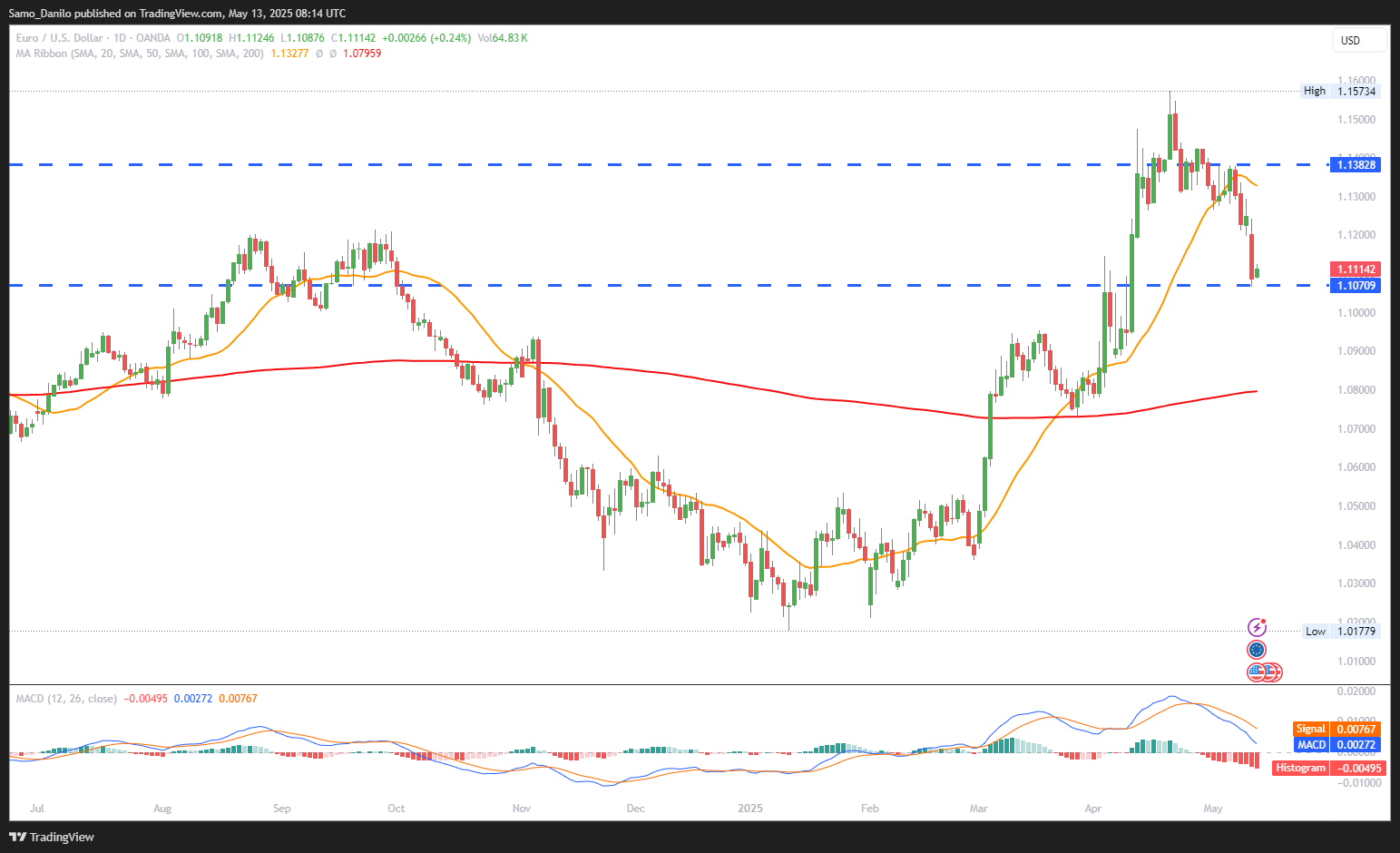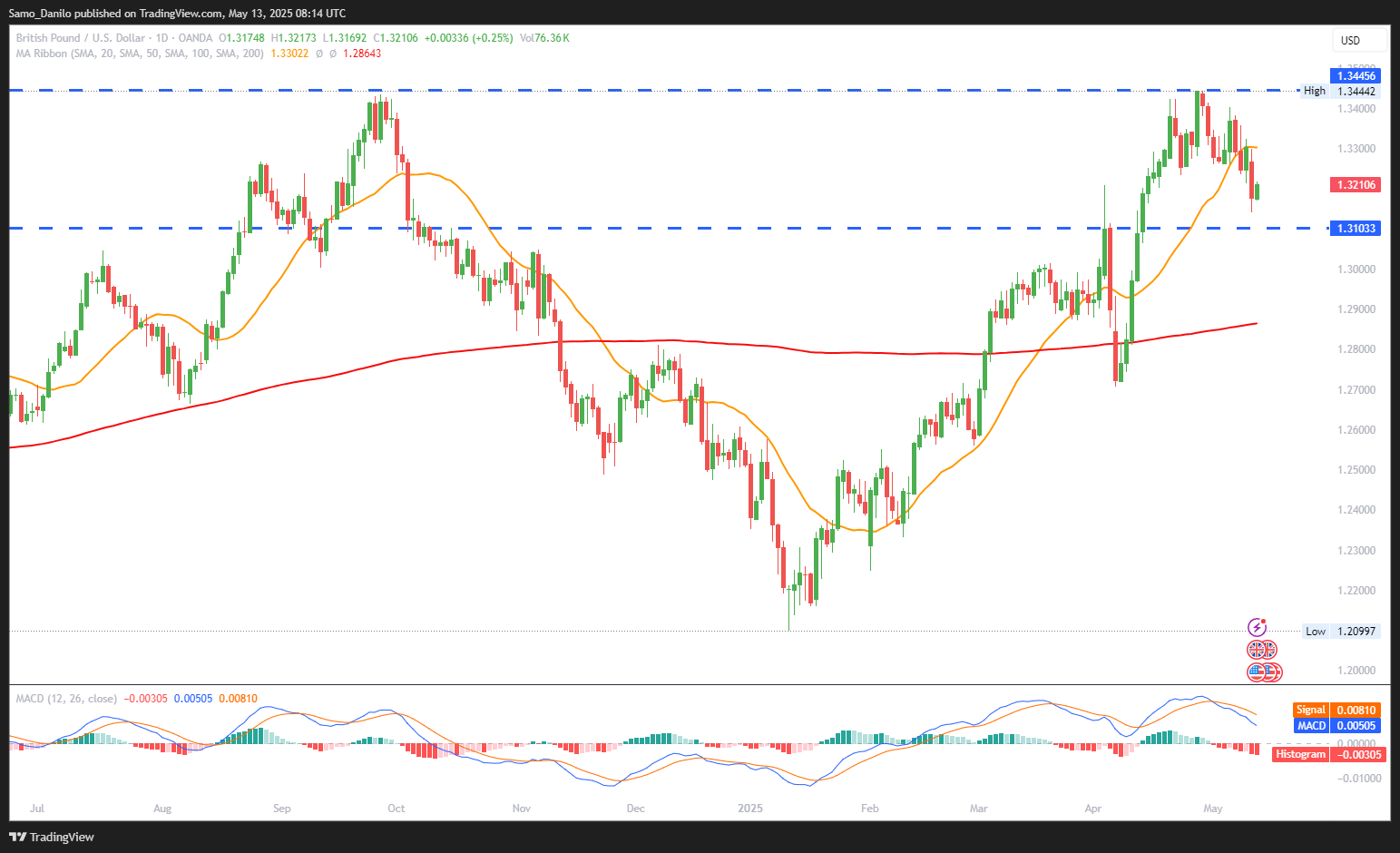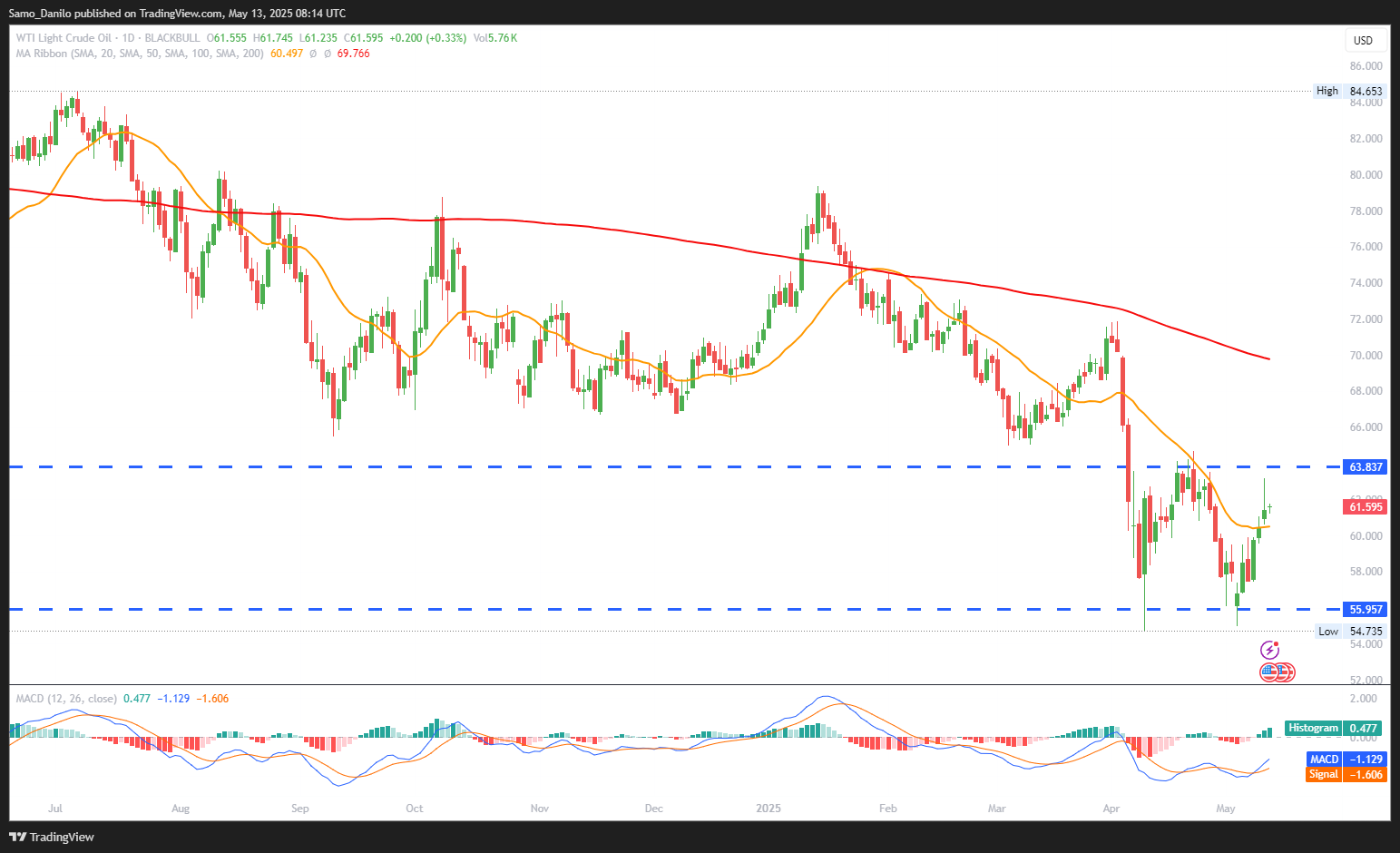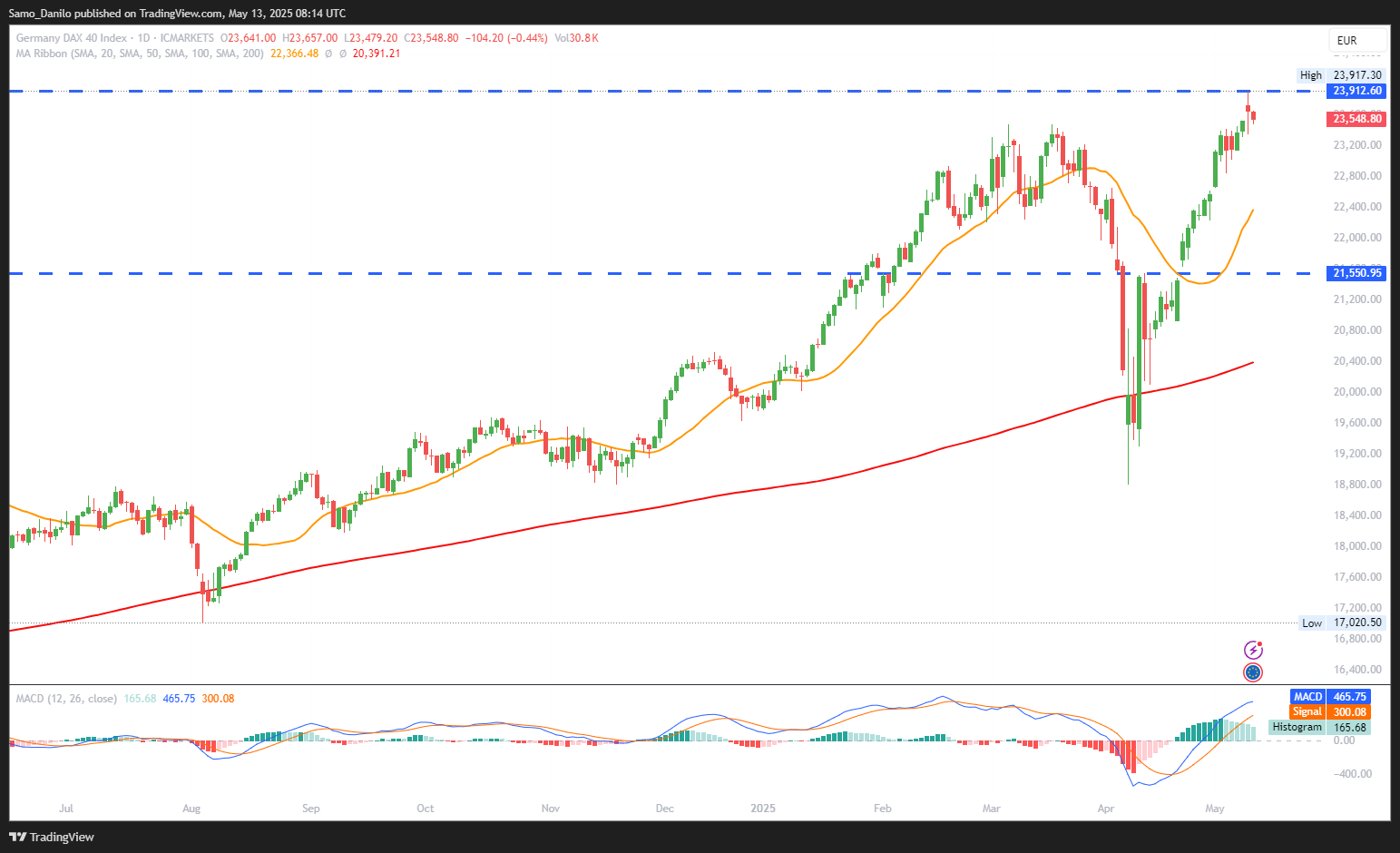EURUSD
- EUR/USD Price: The EUR/USD pair opened with a bullish gap on Tuesday, trading near 1.1110, rebounding from over 2.5% losses in the previous session. The recovery suggests a technical correction, though follow-through depends on upcoming inflation data from the US.
- ECB Policy: Sources told Reuters that the ECB’s policy review is expected to validate past strategies, including quantitative easing, despite internal dissent. This underscores the ECB’s dovish stance, potentially capping euro strength amid global monetary divergence.
- ECB's Schnabel: ECB Executive Board member Isabel Schnabel emphasized in a Stanford speech that current rates are appropriate and should remain neutral, highlighting concerns over moving too quickly amid an uncertain macro environment. Her remarks reinforce market expectations for steady ECB policy near-term.
- Goldman Sachs Outlook: Goldman Sachs lowered its 12-month US recession probability to 35% from 45%, citing improved sentiment following the latest US-China agreement. This shift supports the USD outlook, especially if macro data continues to outperform.
- US CPI Report: Markets now await the April CPI print, expected to rebound to 0.3% MoM for both headline and core inflation. A hotter-than-expected release would likely boost the USD and weigh on EUR/USD, potentially reversing today’s early gains.
Closing statement: EUR/USD is recovering after steep losses, but gains appear fragile amid dovish ECB tones and focus on US inflation. The US CPI report will likely dictate near-term direction, with upside capped unless data disappoints materially.
GBPUSD
- GBP/USD Price: Following a significant selloff at the start of the week, GBP/USD trades marginally higher near 1.3200 during Tuesday’s European session. The rebound is modest and lacks strong bullish conviction, reflecting a fragile sentiment amid mixed macro drivers.
- UK Unemployment: The UK ILO Unemployment Rate rose to 4.5% in the three months to March, slightly up from 4.4% previously, signaling a cooling job market.
- UK Wages: Meanwhile, wage growth excluding bonuses slowed to 5.6% YoY, down from 5.9%, suggesting waning wage pressure despite lingering inflation risks.
- BoE Forecast: The Bank of England now expects 1% GDP growth in 2025, an upgrade from the prior 0.75% projection. This more optimistic view offers limited support to GBP, as markets remain focused on labor slack and the BoE’s potential policy trajectory.
- Geopolitical Risk: US Treasury Secretary Scott Bessent said that talks in Geneva with China produced a mechanism to prevent escalation, a step toward stabilizing global trade. His remarks that China must pivot to a consumption-led model also hint at potential structural shifts that could indirectly benefit UK exports.
Closing statement: GBP/USD is attempting to recover modestly, but fundamentals remain mixed. The weaker UK jobs data and slowing wage growth may limit upside, even as improved growth projections offer some medium-term support. For now, US data and global trade sentiment remain dominant drivers.
XAUUSD
- XAU/USD Price: After a 3% slump on Monday, gold stabilized above the $3,200 mark early Tuesday, indicating solid technical support and persistent haven demand despite the recent correction. Market sentiment remains cautious amid ongoing geopolitical uncertainty.
- Central Bank Demand: The World Gold Council reported continued official sector buying in April. The People’s Bank of China added 2 tons, marking its sixth consecutive monthly purchase, while Poland and the Czech Republic also boosted reserves. This trend reinforces gold’s status as a strategic reserve asset amid global uncertainty.
- US-China Trade Tensions: Reuters revealed that the US will reduce “de minimis” tariffs on Chinese shipments from 120% to 54%, which improves trade sentiment and reduces near-term safe-haven flows into gold. However, a flat $100 fee remains, indicating that tensions have eased but not disappeared.
- India-Pakistan: India’s Prime Minister Narendra Modi said on Monday that operations against Pakistan have only been kept on hold, and the future will depend on their behavior.
- Russia-Ukraine: Ukrainian President Volodymyr Zelensky noted he is prepared to meet Russian President Vladimir Putin this week, shortly after Trump urged him to “immediately” accept the Russian leader’s offer to hold peace talks in Turkey."
Closing statement: Gold is consolidating after a steep drop, supported by ongoing central bank buying and persistent geopolitical risks. However, improving trade sentiment and upcoming US macro catalysts may cap gains in the short term unless new risk events emerge.
CRUDE OIL
- Crude Oil Price: WTI crude oil trades around $61.90 per barrel during Tuesday’s European session, pausing a three-day winning streak. The slight retreat reflects a cautious tone in the market as investors assess conflicting supply-demand dynamics and geopolitical developments.
- OPEC+ Output: Traders are increasingly focused on OPEC+ plans to potentially boost oil production in May and June. The prospect of higher output has reignited oversupply concerns, especially amid uneven global demand recovery.
- Iran Nuclear Talks: President Donald Trump’s comments suggesting progress on Iran nuclear negotiations have led to speculation that sanctions on Iranian crude exports could be eased, which would bring more oil to market and exert further downward pressure on prices.
- Xi Jinping: Chinese President Xi Jinping emphasized the futility of trade wars, reinforcing a commitment to international collaboration. While this boosts general risk sentiment, it also implies that demand-side support may not offset the potential supply glut if OPEC+ and Iran re-enter more aggressively.
- US DoE: The US Department of Energy's plan to remove or revise over 40 energy regulations underscores President Trump’s broader pro-business and deregulation agenda. While it may lower compliance costs for energy producers, it could also raise environmental and sustainability concerns, potentially influencing long-term investment sentiment.
Closing statement: WTI crude oil is encountering headwinds from both rising supply expectations and geopolitical developments, particularly surrounding Iran and OPEC+. While recent trade optimism offers some cushion, the near-term outlook is capped unless demand surprises to the upside or supply risk re-emerges.
DAX
- DAX Price: The DAX surged to an all-time high of 23,911 in early Monday trading, driven by easing tensions in the US-China trade dispute. The rally brings the year-to-date gain to 20%, reinforcing strong momentum in Europe’s largest economy.
- ZEW Economic Sentiment: Germany’s ZEW Economic Sentiment Index is in focus, with expectations for a rebound to 10.7 from -14.0 last month. A positive surprise could reinforce bullish sentiment, while a miss may temper optimism despite strong market performance.
- ECB Expectations: Several ECB policymakers told Reuters the upcoming policy review will largely validate prior measures, including quantitative easing. This signals policy continuity, reassuring markets but limiting expectations for new stimulus in the short term.
- Citigroup Forecast: Citigroup economists have delayed their forecast for the next Fed rate cut to July, reflecting the Fed's data-dependent stance. This could extend current risk-on sentiment, supporting global equities, including the DAX.
- China's Outreach: China’s foreign minister held talks with his Brazilian counterpart in Beijing, indicating China’s efforts to diversify trade ties during the tariff truce with the US. This may shift global trade dynamics, with potential implications for German exporters if competition increases or supply chains reconfigure.
Closing statement: The DAX’s breakout to record highs reflects strong investor confidence underpinned by trade détente and central bank predictability. However, upcoming economic sentiment data and global trade realignments could test the rally’s durability in the near term.





